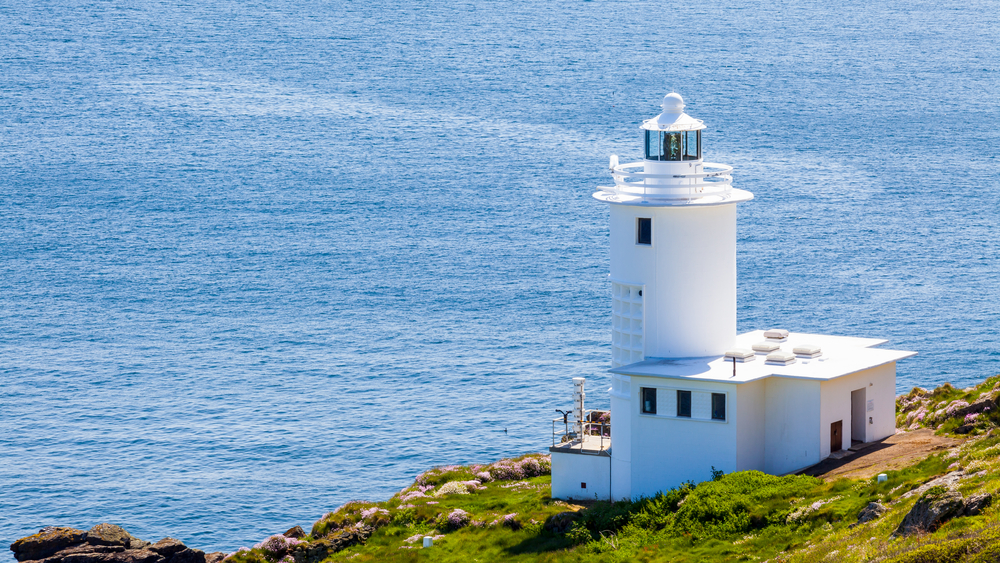Tater Du Lighthouse, not far from Lamorna Cove, is Cornwall’s newest lighthouse and was the first in the UK to be fully automatic with no need for a keeper.
When it was completed by Trinity House in June 1965 Tater Du, which means ‘black loaf’ in Cornish in reference to the dark rocky cliffs on which it stands, was a state of the art building packed with the latest high tech equipment. But most importantly it was also a much needed and long wished for warning light on a notorious stretch of coast.
Tater Du Lighthouse between Porthcurno and Lamorna Cove
The area between Porthcurno and Lamorna Cove boasts several dangerous reefs including the Runnelstone Rocks and the Inner and Outer Bucks Rocks, all of which have claimed more than their fair share of ships. The waters around Tater Du became known as ‘the fishing boat graveyard’ because if the numerous local vessels, as well as passing shipping, that had been lost there and nearby communities had made repeated requests for a lighthouse to be erected. It wasn’t until the wreck of the Juan Ferrer in 1963 however and the subsequent coverage of the disaster in the media that Trinity House was at last pushed to act.
History of Juan Ferrer
The Juan Ferrer was a Spanish ship that had been on her way to Liverpool when she was caught in bad weather. It was a dark October night with a heavy swell, thick fog and driving drizzly rain and it is thought that the crew became disorientated, resulting in the ship hitting rocks at Boscawen Point close to St Loy’s Cove, less than a mile from Tater Du.
The Juan Ferrer quickly began to break apart in the heavy seas and with no working radio and no serviceable lifeboats the 15 crew were forced to jump overboard and try to swim for shore. Only three of them made it.
These three men, Jose Alonso, Benito Nunez and Jose Sevillano, were found the next morning by a rescue party freezing on the rocks close to the wreck and were taken to a nearby farmhouse for food, warmth and dry clothes. Later that day a fourth survivor, the captain, was pulled from the water by the Penlee Lifeboat, the Solomon Browne.
Tater Du Lighthouse commissioned in 1963
The wreck and rescue made international headlines, with startling images and harrowing testimony making news worldwide. Soon after the coverage plans for a new lighthouse gathered momentum and Tater Du lighthouse was operational two years later.
In 2017 Benito Nunez, the last living survivor of the wreck of the Juan Ferrer, returned to Cornwall for the unveiling of a memorial stone which had been erected in Penzance cemetery by the local community in remembrance of those who lost their lives.
Nearly 60 years after it was built the Tater Du lighthouse continues to protect these waters and makes a wonderful destination for a walk along what is a spectacle region of Cornwall’s coast.
